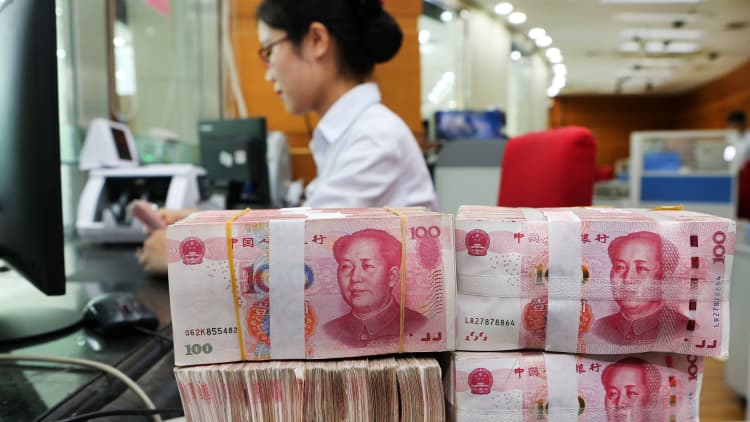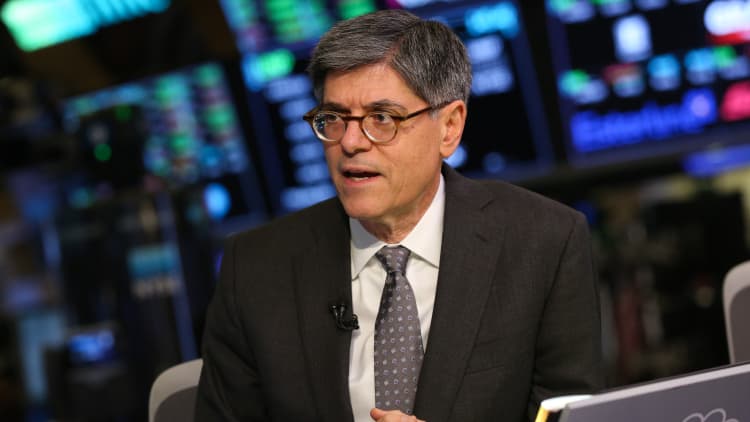Wall Street is obsessed with the yuan right now.
At 9:44 a.m. ET, the Chinese offshore currency hit an intraday low against the dollar. Merely two minutes later, the S&P 500 slumped to the low of the day of 2,824.45. Stocks quickly rebounded in the afternoon with the S&P 500 erasing a 2% loss just when the yuan started to stabilize.
S&P 500 vs. Dollar-Yuan
Source: Koyfin.com
(The above chart shows the U.S. dollar-yuan, so an increase in the line means the currency is weakening vs. the dollar.)
The yuan came to the limelight after China weaponized the currency in the trade war with the U.S. to retaliate against President Donald Trump's tariffs. China on Monday allowed the currency to breach a psychological level — 7 against the dollar — for the first time since 2008, which triggered a deep sell-off with major stock averages suffering their worst days of the year.
The simple explanation is this: If the yuan is falling, it means China is letting it decline to ease the effects of the tariffs and to poke Trump. That in turn means the trade war could drag on further and damage the global economy.
During these wild intraday swings, traders are left searching for answers.

"It's an extraordinarily frustrating market in that the SPX is swinging several percent in a matter of hours based on no fundamental news," Adam Crisafulli, a J.P. Morgan managing director, said in a note midday Wednesday.
But a look at the charts shows the yuan was dictating trading on Wednesday and has been the last three sessions. And it may be influencing the move in U.S. bond yields as well.
The currency is now a big driver of market volatility as the rolling three-month daily return correlation between the offshore yuan and the Cboe Volatility Index is at all-time highs, according to Maxwell Grinacoff, a derivatives and quantitative strategist at Macro Risk Advisors.
The VIX, AKA Wall Street's fear gauge, popped to the highest in 2019 on Monday amid the violent sell-off as the yuan's level sent shock waves through financial markets.
Every night at 9 p.m. ET, the People's Bank of China fixes a level at which the yuan will trade against the dollar within China. The central bank last night set the yuan midpoint at 6.9996 per dollar, slightly weaker than expected.
People's Bank of China insisted that China did "not engage in competitive devaluation." Nonetheless, the U.S. Treasury Department declared China as a currency manipulator after letting the yuan break the key level.
–CNBC's Fred Imbert contributed reporting.



